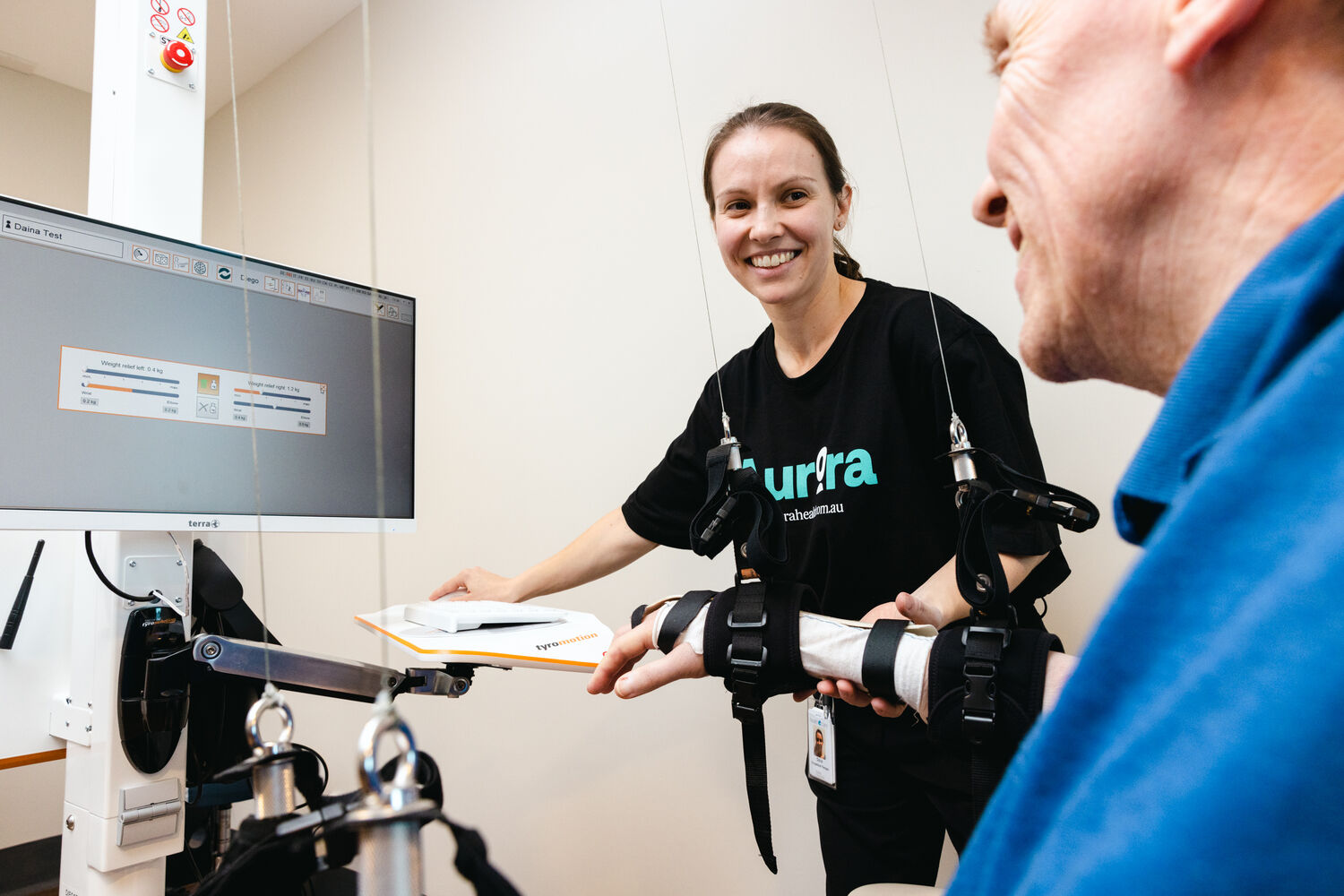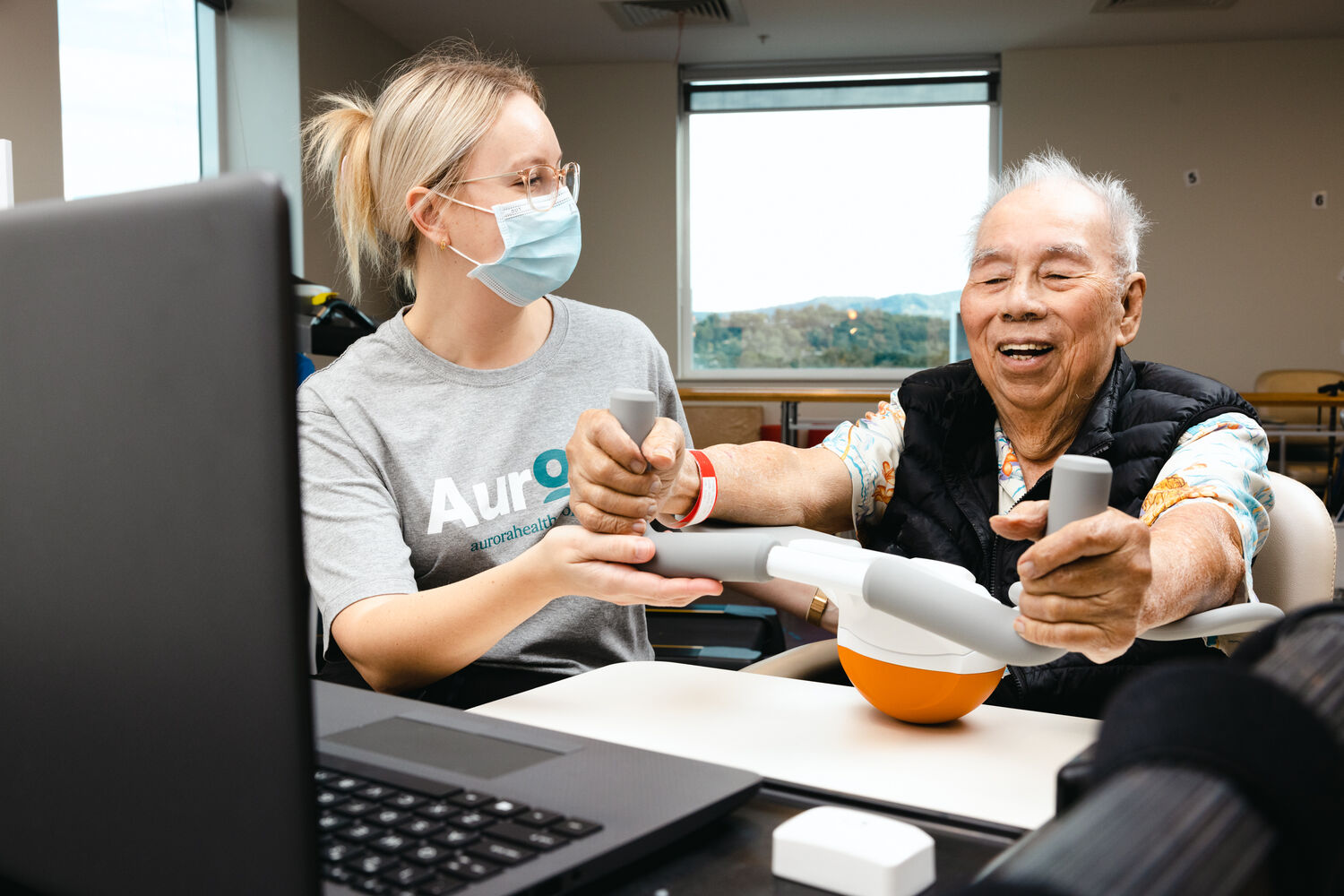What is robotic-assisted rehabilitation and how does it work?
Robotic-assisted rehabilitation integrates machines with technology to help improve and advance physical rehabilitation for people who have suffered from various conditions resulting from accident, illness or surgery.
What is robotic-assisted rehabilitation?
Robotic-assisted rehabilitation is an emerging field of rehabilitation that has combines traditional physical rehabilitation therapies (including physiotherapy and occupational therapy) with the use of robotics and technology. Robotic-assisted rehabilitation integrates machines with technology to help improve and advance physical rehabilitation for people who have suffered from various conditions resulting from accident, illness or surgery.
How does robotic-assisted rehabilitation work?
Robotic rehabilitation machines assist therapists to enhance the patient's rehabilitation journey. The machines assist the patients to carry out their rehab tasks (i.e. help the patient to move their weak limbs).
What conditions does robotic rehabilitation help with?
Robotic-assisted rehabilitation can help with (but not limited to); stroke, Parkinson’s disease, multiple sclerosis, fractures, orthopaedic surgeries, traumatic brain injuries, spinal cord injuries and many more conditions. Recent research suggests that robotics can improve upper limb motor function and muscle strength after stroke.
The different types of robotic rehabilitation machines
Various machines have been developed by different companies to help speed up and advance the rehab of people suffering from different conditions.
Different machines utilise different technologies. We have now purchased at Robina Private Hospital to assist our patients with their rehabilitation – Diego and Pablo.
Diego
Diego is a robotic device that is sensitive to the amount of movement and strength a person has in their upper limb and then allows the user to have assistance with their movement to help improve their strength and function.
The device itself offers weight-assisted arm and shoulder rehab. The therapist can program the machine to offer different levels of support and assistance so a patient with minimal arm and shoulder movement can be assisted by the device to move their arm. This is then incorporated into either 2D, 3D or virtual reality games on the screen to assist with functional movements of the upper limb.
Watch the video here to see how Diego works.
Pablo
The Pablo robotic device uses sensors to detect movement and positioning of the body or joints which then allow the therapist to set tasks and games for the patient to achieve improved movement, strength, balance and body positioning. These devices also allow the user to manage many more repetitions of movement and massively increase the intensity of treatment (number of repetitions done by a patient) which in turn helps speed up the rehab process and enhance patient recovery. Pablo is a very versatile piece of robotic rehab equipment. Essentially it uses sensors (attached to anywhere on the body) to measure and gauge movements. The therapist works out what movements they want you to focus on and then uses this to set you tasks and/or games on the screen to encourage those movements, which helps with joint movement, strengthening and balance.
Watch the video here to see how Pablo works.
Robotic-assisted rehabilitation is available now at Robina Private Hospital
Robotic-assisted rehabilitation is an innovative and fascinating, emerging field within rehab. At Robina Private Hospital we are excited to have been able purchase both the Pablo and Diego robotic devices and have been using them with success with our current inpatient and outpatient rehab patients. If you would like to find out more about our robotic-assisted rehab inpatient and outpatient therapies and see if it could benefit you, then feel free to contact the Robina Private rehab team on either 07 5665 5100 or send an email to our Rehab Team Lead at [email protected]
We look forward to starting your robotic-assisted rehab journey with you.
Author: Lisa Rushton
Lisa is a physiotherapist and Rehab Team Lead at Robina Private Hospital
Sources
Mehrholz J, Pohl M, Platz T, Kugler J, Elsner B. Electromechanical and robot-assisted arm training for improving activities of daily living, arm function, and arm muscle strength after stroke. Cochrane Database Syst Rev. (2018) 9:CD006876. doi: 10.1002/14651858.CD006876.pub5
Zariffa J, Kapadia JLK, Talyo P, Alizadeh-Meghhrazi M, Zivanovic V, et all. Effect of robotic rehabilitation device on upper limb function in sub-acute cervical spinal cord injury population. IEEE Int Conf Rehab Robot (International). 2011;50(3):220-6. http://dx.doi.org/10.1038/sc.2...

